The first pylon leads into an open courtyard, lined with colossal statues of Ramesses III as Osiris on one side, and uncarved columns on the other.
The Hypostyle Hall past the second court now has no roof, but originally had a raised center aisle. Hieroglyph-covered bases of 24 pillars are all that remains. Five chapels dedicated to Ptah, Sokar, Osiris, Ramses II and Ramses III are to the right of the Hypostyle Hall, and chambers to the left are believed to have once held treasure.
Statues of Ramses III accompanied by Thoth and Maat flank the second hall’s central aisle. This aisle leads back into sanctuaries dedicated to the Theban Triad. There is even a false door that was to be used for Ramses III’s soul.
we drove on to Valley of Kings, took the golf cart with a 20egp ticket [keep ticket safe for return journey]. We took a pic of the list of all open tombs,
Valley of the Kings is a wadi [valley] on the west bank of the Nile, opposite Thebes (modern-day Luxor). There are two main sections: the East Valley, where the majority of the royal tombs are situated; and the West Valley, otherwise known as the Valley of the Monkeys.
Valley of the Kings contains 65 tombs and chambers, from new kingdom for a period of nearly 500 years from the Eighteenth Dynasty to the Twentieth Dynasty, ranging in size from the simple pit that is KV54 to the complex tomb that is KV5, which alone has over 120 chambers for the sons of Ramesses II.
The royal tombs are decorated with
traditional scenes from Egyptian mythology and reveal clues
to the period's funerary practices and afterlife
beliefs.
Tombs are numbered in the order they were discovered... eg, the first tomb that was discovered in
the Valley is labeled KV1[KV=Kings valley].
OPEN TOMBS
[people with regular tickets can see 3 of the tombs below and pay extra for each of the special 3 as marked. We had the premium pass, so we could see all, great value at $125]
Rameses VII [KV1]
Rameses IV (KV2) 20th Dynasty
Rameses IX (KV6)
Merenptah (KV 8)
Rameses V/VI (KV 9) extra tkt
Ramses III [KV 11]
Tausert / Setnakht (KV 14)
Seti II (KV 15)
Rameses I (KV 16)
Seti I (KV 17) extra tkt
Mentuherkhepeshef 20th Dynasty, a son of pharaoh Ramesses IX who
died before his father [KV 19]
Ay (KV 23)
Thutmoses III (KV 34)
Amenhotop II (KV 35)
Thutmoses IV (KV 43)
Siptah (KV47)
Horemheb (KV 57)
Tutankhamun (KV62) extra tkt
as seen in the map, KV 1 is on a branch, we went into KV6 first
Rameses IX (KV6) (ruled 1129–1111 BC)
eighth pharaoh of the Twentieth Dynasty of Egypt. He was the third longest serving king of this Dynasty [18 years] after Ramesses III and Ramesses XI. probably a grandson of Ramesses III. His reign is best known for the year 16 and year 17 tomb robbery trials,
Running 105 metres into the hillside, the tomb begins with a gate and a shallow descending ramp followed by three successive stretches of corridor. The first of these has four side chambers – two on each side – but none of these are decorated or finished.
At the end of the corridors come three chambers. The first of these is decorated with the Opening of the mouth ritual, and it is possible that a well shaft would have been dug here had the builders been afforded more time
. The second chamber contains four large columns, but neither the cutting nor the decoration work were completed. At the far end of this chamber, a ramp slopes down to the burial chamber
here's the burial chamber, where the pharaoh's sarcophagus was placed (the floor has a rectangular section carved out to accommodate it). While the sarcophagus itself has long since vanished, Ramesses IX's mummy was one of those found in the Deir el-Bahri cache.
The ceiling is vaulted, and is decorated with pictures of the goddess Nut. The side walls show scenes from the Book of Caverns and the Book of the Earth.
The far wall depicts Ramesses on his barque, surrounded by a host of gods. .
NEXT, we were at KV 62 Tomb of Tutankhamun
KV 62 Tomb of Tutankhamun
Discovered by Howard Carter on November 4, 1922, the Tomb of Tutankhamun is by far the Valley of the King's most famous tomb.Tutankhamun (reigned c. 1332–1323 BC), a pharaoh of the Eighteenth Dynasty of ancient Egypt.
The tomb consists of four chambers and an entrance staircase and corridor. It is smaller and less extensively decorated than other Egyptian royal tombs of its time, and it probably originated as a tomb for a non-royal individual that was adapted for Tutankhamun's use after his premature death.
Like other pharaohs, Tutankhamun was buried with a wide variety of funerary objects and personal possessions, such as coffins, furniture, clothing and jewelry, though in the unusually limited space these goods had to be densely packed.
Robbers entered the tomb twice in the years immediately following the burial, but Tutankhamun's mummy and most of the burial goods remained intact. The tomb's low position, dug into the floor of the valley, allowed its entrance to be hidden by debris deposited by flooding and tomb construction. Thus, unlike other tombs in the valley, it was not stripped of its valuables during the Third Intermediate Period (c. 1070–664 BC).
Tutankhamun's tomb was discovered in 1922 by excavators led by Howard Carter. As a result of the quantity and spectacular appearance of the burial goods, the tomb attracted a media frenzy and became the most famous find in the history of Egyptology. The death of Carter's patron, the Earl of Carnarvon, in the midst of the excavation process inspired speculation that the tomb was cursed.
Tutankhamun was the son-in-law of Akhenaten, and died (in circumstances unknown) in his 18th or 19th year.
Although the tomb was broken into soon after the pharaoh's burial, it remained almost intact, together with its rich furnishings.
These furnishings, the famous "Treasures of Tutankhamun" (mostly now in the Egyptian Museum in Cairo), were the largest and most valuable find of grave goods ever made in Egypt, giving an overwhelming impression of the splendor of a royal burial in Pharaonic times.
A flight of 16 steps leads down to the entrance on the east side of the tomb.
The doorway opens into a narrow passage, 7.5 meters long, and at the far end, another door gives access to an antechamber, the largest chamber in the tomb, which was found filled to overflowing with grave goods of all kinds.
At the southwest corner (far left) is a side chamber. At the north wall, two life-size wooden statues of the pharaoh were found.







Merenptah (KV 8)
The entrance corridors have texts from the Praising of Re (on the left a very fine painted relief of the king before Re-Harakhty) and scenes from the Realm of the Dead (from the Book of the Gates),
fairly steeply down to an antechamber containing the granite lid of the outer coffin.
From here, steps lead down to a three-aisled hypostyle hall with a barrel vault over the central aisle and flat roofs over the side aisles.
In this chamber is the lid of the royal sarcophagus depicting a recumbent figure of the pharaoh.
The lid, which as usual is in the form of a royal cartouche, is beautifully carved in pink granite. The carving of the pharaoh's face is particularly fine.
coming back to the entrance...





Rameses I (KV 16) [1292-1290 probably]
Ramesses I was founding pharaoh of ancient Egypt's 19th Dynasty., he was of non-royal birth, being born into a noble military family.
Horemheb, the last pharaoh of the tumultuous Eighteenth Dynasty, appointed Ramesses I as his vizier. Horemheb himself had been a nobleman from outside the immediate royal family, who rose through the ranks of the Egyptian army to serve as the royal advisor to Tutankhamun and Ay and, ultimately, pharaoh. Since Horemheb had no surviving children, he ultimately chose Ramesses to be his heir in the final years of his reign presumably because Ramesses I was both an able administrator and had a son (Seti I) and a grandson (the future Ramesses II) to succeed him and thus avoid any succession difficulties.
Already an old man when he was crowned, Ramesses appointed his son, the later pharaoh Seti I, to serve as the Crown Prince and chosen successor. Seti was charged with undertaking several military operations during this time–in particular, an attempt to recoup some of Egypt's lost possessions in Syria. Ramesses was in charge of domestic matters: most memorably, he completed the second pylon at Karnak Temple, begun under Horemheb.
THE TOMB
Ramesses I ruled for less than two years, his sepulchre is rather truncated, being only twenty-nine metres long. It consists of two descending staircases, linking a sloping corridor and leading to the burial chamber. The sarcophagus, still in place in the final chamber, is constructed of red quartzite.
The tomb is small in size and gives the impression of having been completed with haste.
The walls, after a hurried coat of plaster, were painted to show the king with his gods, with Osiris allowed a prominent position.
The red granite sarcophagus too was painted rather than carved with inscriptions which, due to their hasty preparation, included a number of unfortunate errors.
Like the tomb of Horemheb (KV57), the grave is decorated with the Book of Gates. The Book of Gates is a guidebook to the netherworld found in 19th and part of the 20th Dynasty tombs of the New Kingdom, starting with the last king of the 18th Dynasty. It guides the dead pharaoh to navigate his way with the sun god through the netherworld toward resurrection There are 12 gates corresponding to the 12 hours of the night, each has guardian deities whose names must be known in order to pass them
The Pharoah's Ka and Ba being led by Horus in the lead, Isis at the back [Ka is the soul, Ba the invisible entity to assist family]
the coiled serpent Hereret represents time and twelve goddesses named “the hour goddesses who are in the Duat” represent the twelve hours of the underworld.
Seti I (KV 17)
It is one of the most decorated tombs in the valley, and is one of the largest and deepest tombs in the Valley of the Kings. Measuring 137.19 meters (450.10 feet), it contains well preserved reliefs in all but two of its seventeen chambers and side rooms. A portion of the tomb is still being excavated, known as Corridor K. Corridor K leads away, into the mountainside, from beneath the location where the sarcophagus stood in the burial chamber.


















Siptah (KV47)
The outer corridors are plastered and decorated to a high standard. Immediately inside the entrance, Maat is depicted on either side seated on a basket supported by the plants of Upper and Lower Egypt. Beyond, on the left side, the king receives life, power, and strength from Ra-Horakhty.
Scenes from the Litany of Re dominate the first passage, with further chapters in the second; chapters from the Book of the Dead also feature in the first and second corridors. Scenes from the Amduat once decorated the third corridor, though decoration here is mostly lost, with little trace of plaster remaining. The ceiling of the first corridor features vultures with outstretched wings; "unbesmirched by soot and smoke they remain one of the finest examples of such ceilings in the Valley."
The second corridor has a ceiling painted with yellow stars on a blue background and a central band of inscription, taken from the Litany of Re.Traces of decoration depicting chapters of the Amudat also remain in the antechamber
The cartouche-shaped sarcophagus, measuring 10.25 by 5.25 feet (3.12 m × 1.60 m), was found in good condition with the lid lying face down beside it. The lid features the Osiride figure of the king flanked by Isis and Nephthys; the box is decorated with funerary texts,and an alternating band of kheker-frieze and seated jackals, with underworld deities below. Isis and Nephthys are also present at the head and foot ends. The contents of the huge box proved only to be a handful of bones from a later, Third Intermediate Period burial
Tausert / Setnakht (KV 14)
Tomb KV14 is a joint tomb, used originally by Twosret and then reused and extended by Setnakhte. it has two burial chambers, the later extensions making the tomb one of the largest of the Royal Tombs, at over 112 metres long.
The original decoration showing the female Twosret was replaced with those of the male Setnakhte.
SETI II (KV 15)
short entry corridor followed by three corridor segments, which terminate in a well room that lacks a well, which was never dug. This then connects with a four-pillared hall and another stretch of corridor that was converted into a burial chamber.
The walls and ceiling of the chamber were covered with plaster and painted with Anubis jackals and two rows of deities, representing the followers of Ra and Osiris, which are placed over a lower row of mummy-like figures. The winged goddess Nut appears along the length of the ceiling and what may be a representation of the Ba of Ra is painted above her head.The paintings are conventional depictions drawn from the Egyptian Litany of Re, Amduat and the Book of Gates.
Wall paintings in the well room are more unusual showing the king in shrines in a number of different manifestations; for instance on the back of a panther or on a papyrus skiff.
Seti II was buried there, but he may have originally been buried with his wife Twosret in her tomb in KV14 and subsequently moved to the hastily finished KV15 tomb, perhaps by the later pharaoh Setnakhte, who took over KV14 for his own tomb.
Seti's name appears to have been carved, erased and then re-carved. Amenmesse or possibly Siptah may have been responsible for the erasure, while Twosret may have had Seti's name restored. Seti's mummy was later moved to the mummy cache in tomb KV35; only the lid of his sarcophagus remains in KV15










Rameses V/VI (KV 9)
Tomb KV9 was originally constructed by Pharaoh Ramesses V. He was interred here, but his uncle, Ramesses VI, later reused the tomb as his own.
Its layout consists of a long corridor, divided by pilasters into several sections, leading to a pillared hall, from which a second long corridor descends to the burial chamber.
View down the first corridor of the tomb

The digging of the burial chamber was not fully completed; its back wall has two pillars which are still connected to the wall behind them instead of standing separate.
Below is a part of the Book of Caverns (fifth division) on the right wall of the corridor; the goddess Nut is visible on the right
On both sides are images of Ramesses VI before Ra-Horakhty and Osiris. The scenes originally depicted Ramesses V but were usurped. On the south wall of the corridor begin the scenes from a complete version of the Book of Gates, while the north wall is decorated with an almost complete exemplar of the Book of Caverns.
Below is Book of Gates (ninth division) on the left wall of the corridor
Below is the first hall or pillared hall; a double scene of Osiris is visible in the middle, above the ramp descending to the second corridor




Winged cobra next to the ramp
The ceilings are decorated with astronomical figures and constellations in the first few divisions of the corridor, while in the last two divisions, and continuing into the first hall , is a double presentation of both the Book of the Day and the Book of the Night, framed by an elongated image of the goddess Nut.
The burial chamber, facing the north wall
South wall of the burial chamber, with part of the Book of the Earth (Book of Aker), Vaulted ceiling of the burial chamber: double image of the goddess Nut framing the Book of the Night (right) and the Book of the Day (left)
Book of the Earth (Book of Aker)
Below is the rear wall of the chamber, with two unfinished pillars flanking a small room in the middle



KV2 Ramesses IV [reign 1155 to 1149 BC]
THE TOMB
Like other tombs of the 20th Dynasty, KV2 is laid out along a straight axis. The successors of Ramesses III from this dynasty constructed tombs that follow this pattern and most were decorated in a similar manner to one other.
The tomb has a maximum length of 88.66 m and consists of three slowly descending corridors labeled B, C, and D. This is followed by an enlarged chamber (E), and then the burial chamber (J). Past the burial chamber lies a narrow corridor (K) flanked by three side chambers [Ka, Kb and Kc]. The tomb is mostly intact and is decorated with scenes from the Litany of Ra, Book of Caverns, Book of the Dead, Book of Amduat and the Book of the Heavens.
The sarcophagus is broken (probably in antiquity), and the mummy was relocated to the mummy cache in KV35
The tomb was one of about eleven tombs open to early travelers. KV2 contains the second-highest number of ancient graffiti within it (after KV9), with 656 individual graffiti left by both Ancient Greek and Roman visitors.This tomb also contains around 50 or so examples of Coptic graffiti, mostly sketched onto the right wall by the entranceway. The tomb was likely used as a dwelling by Coptic monks, and there are also depictions of Coptic saints and crosses on the tomb's walls
BACKGROUND OF THE PHAROAH
Ramesses IV came to the throne in difficult circumstances. Ramesses III, his father, was assassinated by conspirators led by Tiye, one of his secondary wives, to establish Pentawer, her own son and Ramesses IV's half-brother, on the throne. Ramesses IV, however, was able to secure himself on the throne, and had the conspirators arrested and executed.
Despite the 31-year reign of his father Ramesses III, Ramesses IV was only 21 when he became pharaoh. His rule has been dated to 1155 to 1149 BC.
to ensure that he would have a sizable tomb, he doubled the size of the existing work gangs at Deir el-Medina to a total of 120 men.
he also sent out the largest expedition to quarries....8,368 men served in the Year 3 quarry expedition, a total of 900 men perished during this endeavour for a mortality rate of 10.7%. Some of the stones which were dragged 60 miles to the Nile from Wadi Hammamat weighed 40 tons or more.
He also sent several expeditions to the turquoise mines in the Sinai.
The most important document to survive from this pharaoh's rule is Papyrus Harris I, which honours the life of his father, Ramesses III, by listing the latter's many accomplishments and gifts to the temples of Egypt, and the Turin papyrus, the earliest known geologic map.
his program included the extensive enlargement of his father's Temple of Khonsu at Karnak and the construction of a large mortuary temple near the Temple of Hatshepsut
Despite Ramesses IV's many endeavours for the gods and his prayer to Osiris—preserved on a Year 4 stela at Abydos—that "thou shalt give me the great age with a long reign [as my predecessor]", the king did not live long enough.
After a short reign of about six and a half years, Ramesses IV died aged just 27 years





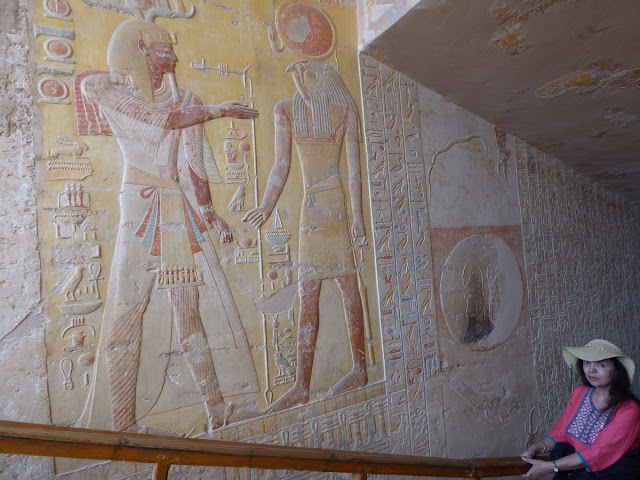







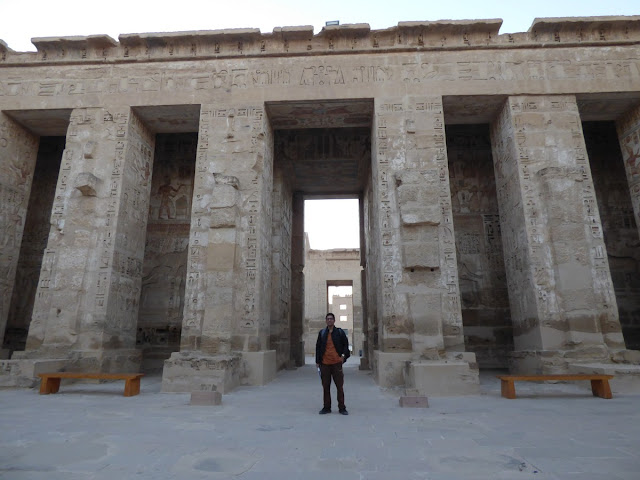

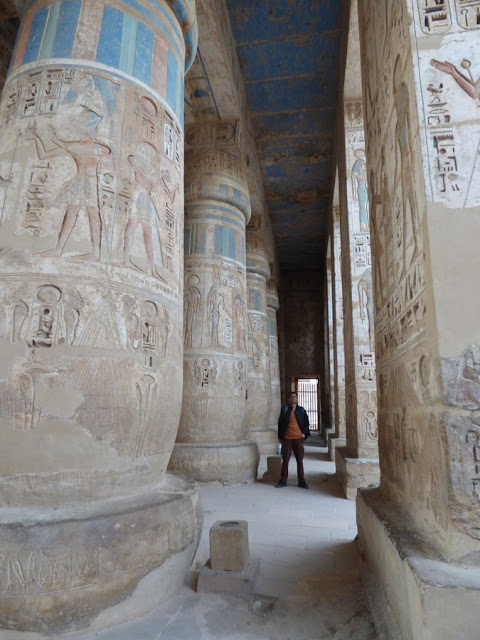















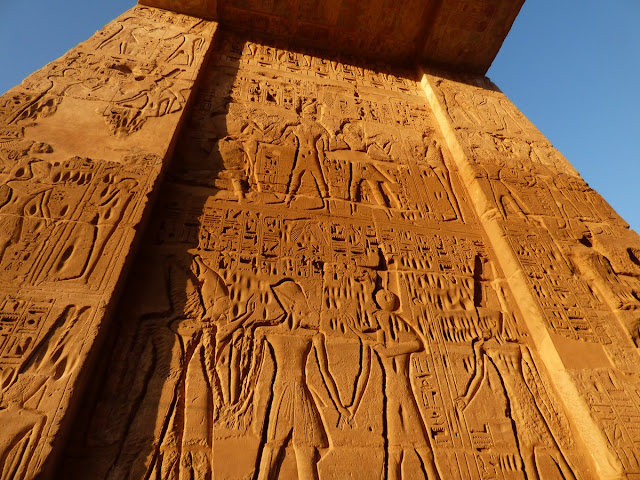




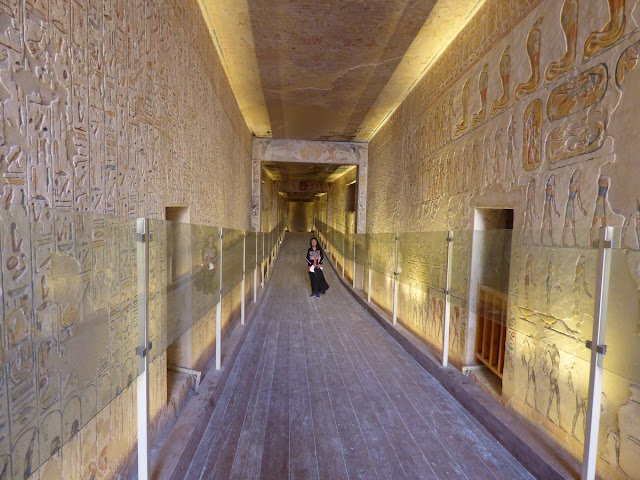

































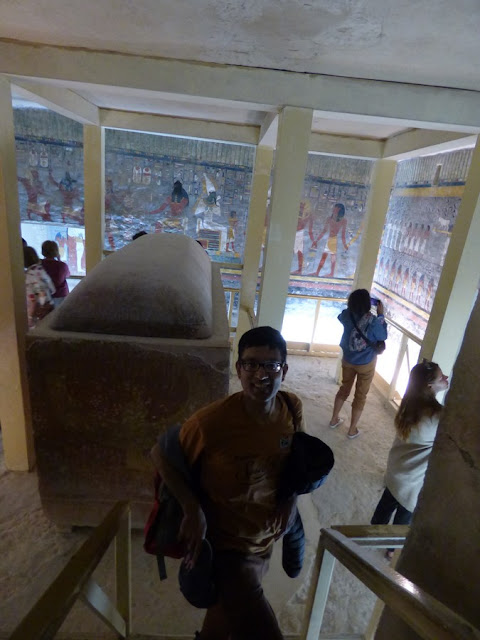




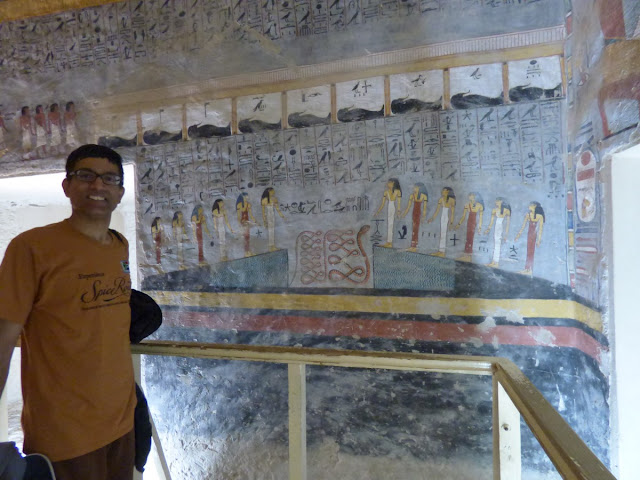








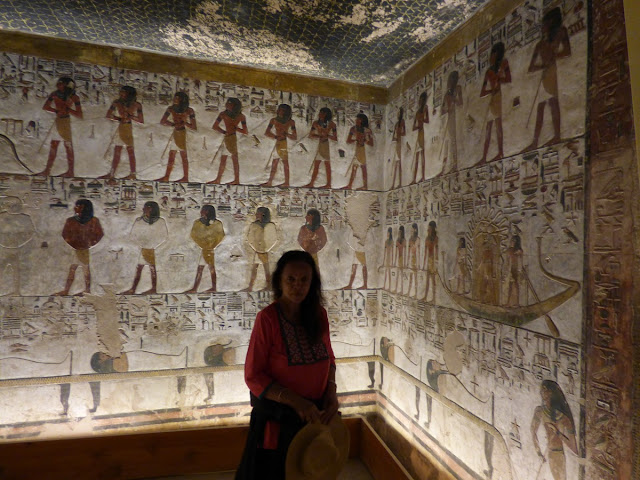





























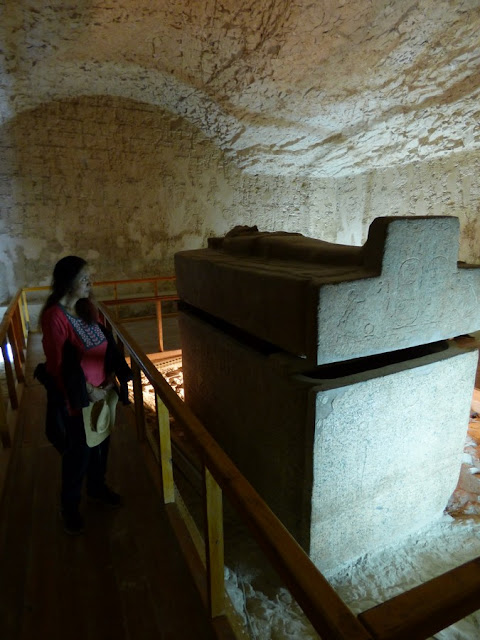






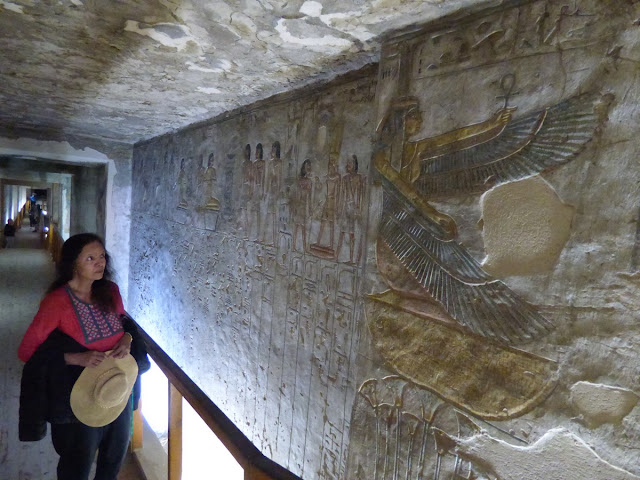










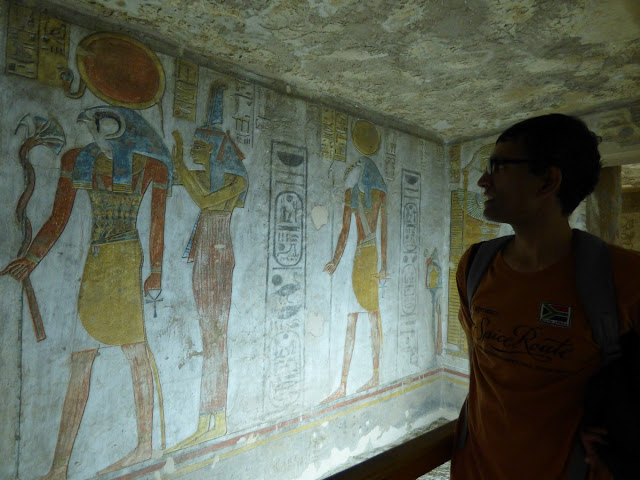




























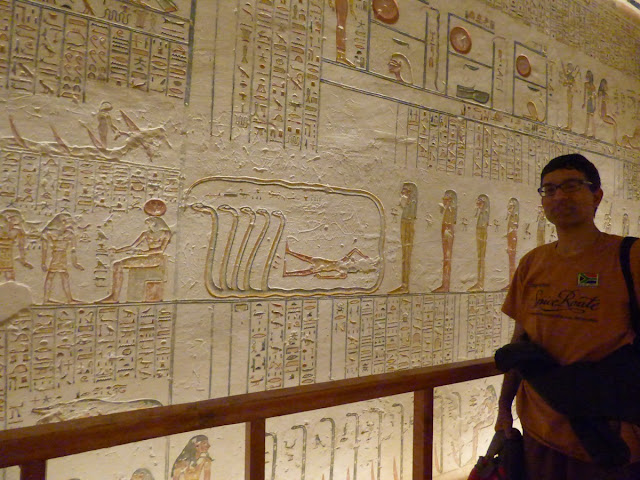






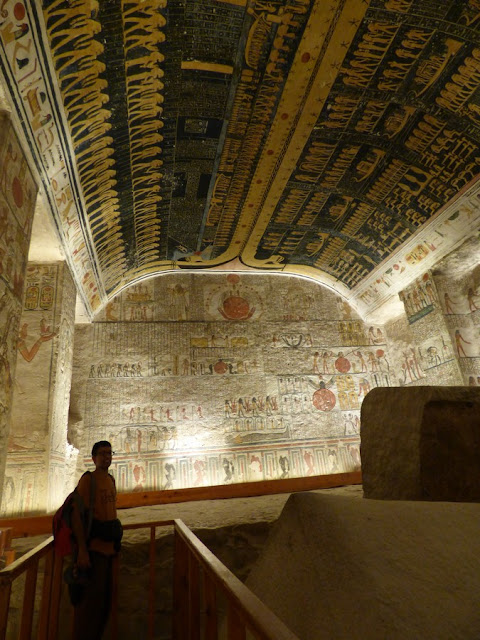













No comments:
Post a Comment